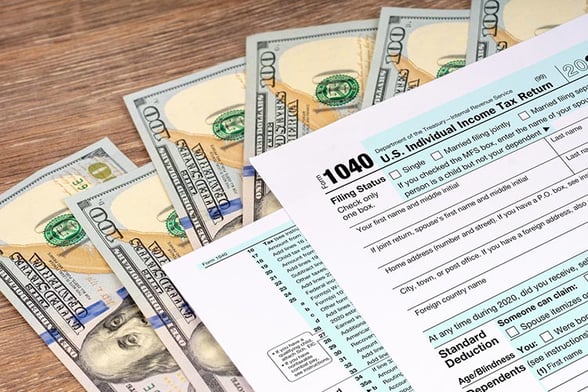
If you’ve filed a federal income tax return since the year 1913, you’re likely familiar with IRS Form 1040.
Form 1040 was first issued in 1914 for the 1913 tax year following the ratification of the 16th Amendment which created a nationwide income tax. The initial Form 1040 was reused for the first several tax years but has undergone numerous revisions over the ensuing decades. In 2021, more than 169 million Americans used Form 1040 to file federal tax returns. Another 152 million used Form 1040(e), or electronically filed tax returns.¹
For the millions of Americans over 65 who still prepare their taxes by hand, the IRS made some important changes to Form 1040 to make the process more convenient. The updated Form 1040-SR includes special considerations for seniors with age-related vision problems. We’ll highlight those elements below.
Changes to Form 1040-SR
Form 1040-SR was signed into law by President Trump as part of the Bipartisan Budget Act of 2018 and used in 2019. Form 1040-SR was created specifically for seniors who are at least 65 years old at the end of the tax year in which they file. For the 2021 tax year, you must have been born before January 2, 1957. However, if you are married and filing jointly, only one taxpayer must meet this age requirement.
The most notable difference between Form 1040 and Form 1040-SR is the type size. Form 1040-SR has a much larger font, as well as larger boxes for seniors to input their information and numbers when completing the document by hand. Informational pages on Form 1040-SR also have wider spacing for easier viewing.
Another significant change seniors will notice is the Standard Deduction section near the top. This section contains a question related to taxpayer age and blindness, since millions of seniors suffer from age-related vision problems. The number of checkmarks input here affects the amount of your standard deduction for taxpayers who do not itemize their deductions using Schedule A. Form 1040-SR also includes a standard deduction table embedded within the document to help seniors easily identify their standard deduction.
In addition, Form 1040-SR does not contain the income limitations seen in previous versions of Form 1040. There are no limits on ordinary income, dividends, capital gains, or other forms of taxable income.
Seniors over 65 don’t have to use Form 1040-SR. However, it was designed specifically for that age demographic since it’s easier to read and fill out.
Source:
1. Statistics on Income Tax Returns, Form, Collections, eFile, https://www.efile.com/irs-income-tax-return-and-collection-form-statistics-data/
This material is for general information and educational purposes only. Information is based on data gathered from what we believe are reliable sources. It is not guaranteed as to accuracy, does not purport to be complete and is not intended to be used as a primary basis for investment decisions. It should also not be construed as advice meeting the particular investment needs of any investor. Realized does not provide tax or legal advice. This material is not a substitute for seeking the advice of a qualified professional for your individual situation.



